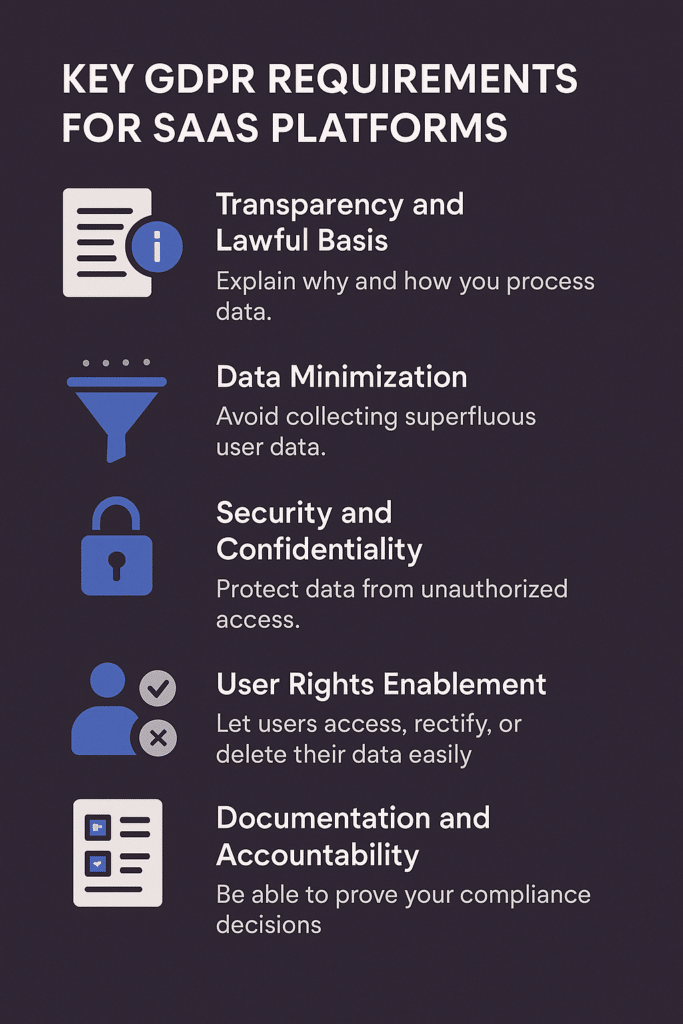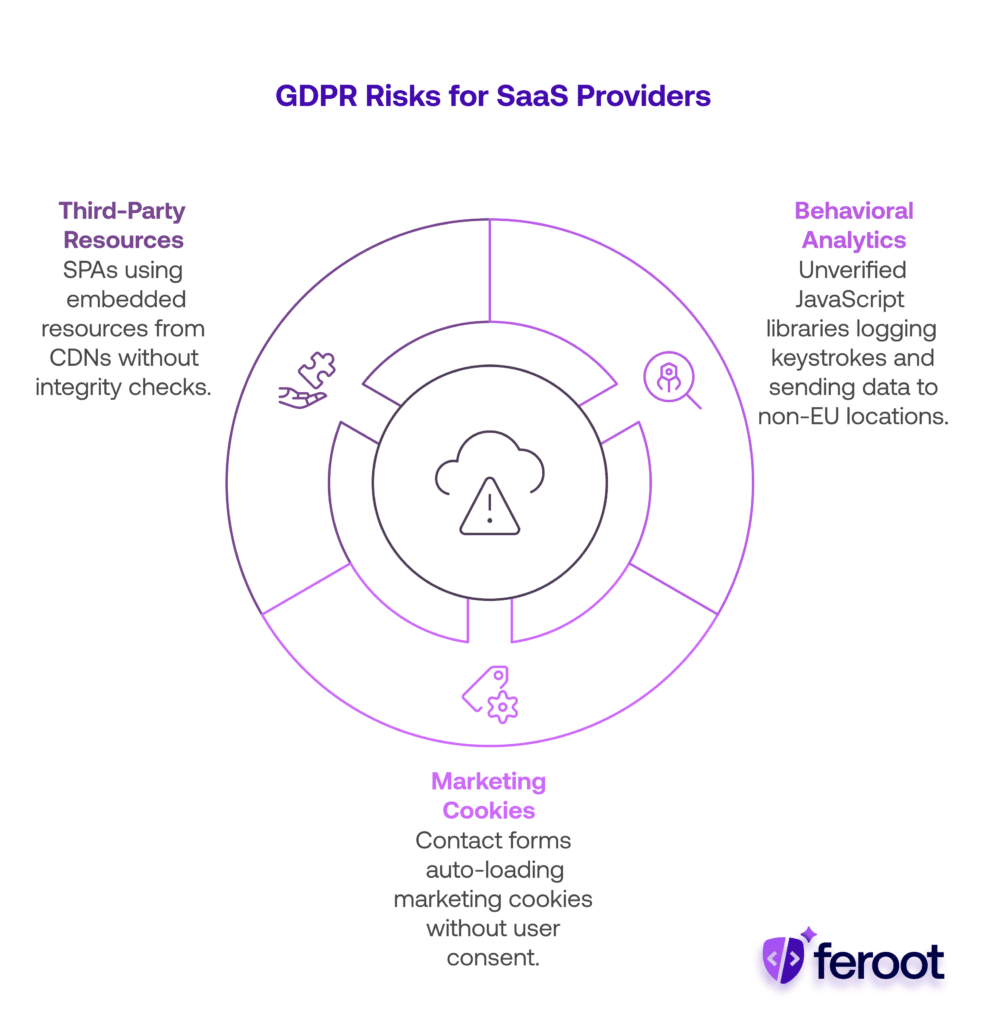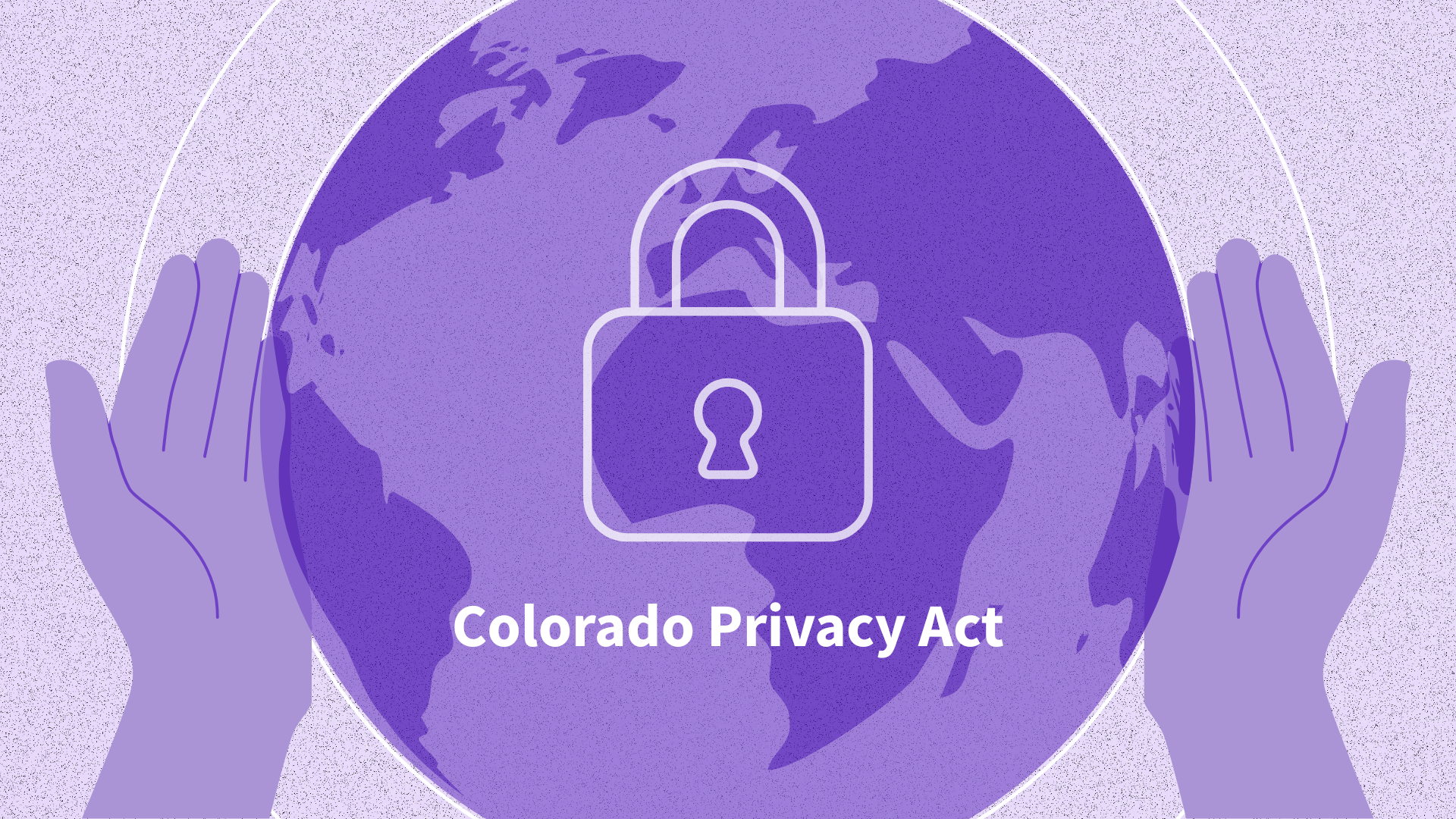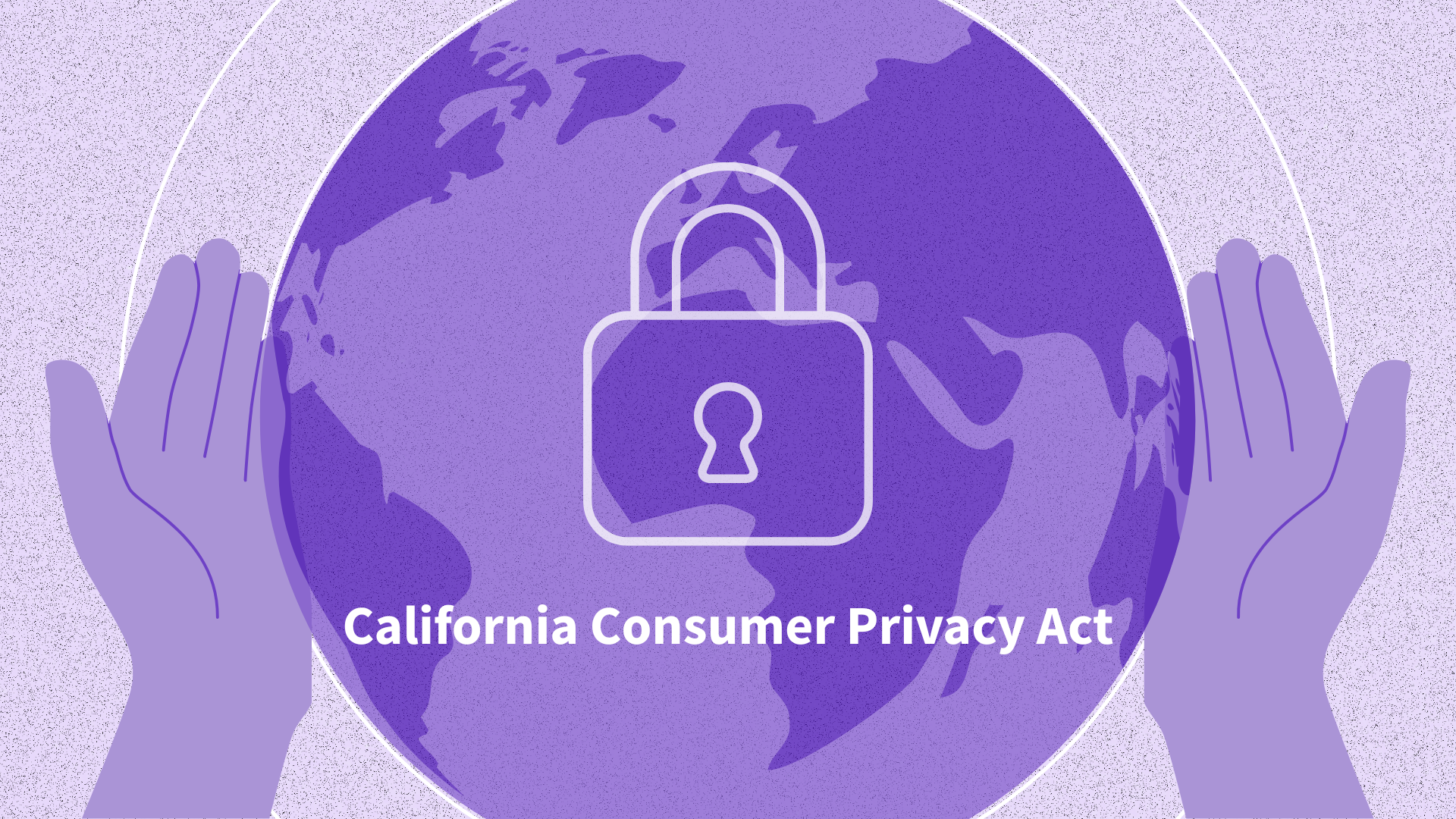TL;DR
- GDPR enforcement is intensifying in 2025, especially for SaaS platforms handling personal data.
- Real-time monitoring, documentation, and consent governance are essential for compliance.
- Controllers and processors now share legal liability under new enforcement practices.
- AI profiling, third-party scripts, and cross-border transfers face increased scrutiny.
- SaaS companies must demonstrate transparency, minimize data collection, and make user rights easily accessible.
The General Data Protection Regulation (GDPR) is more than a legal requirement—it’s a trust signal in today’s competitive SaaS market. As 2025 unfolds, the need to align with GDPR’s evolving demands has never been greater. This guide provides a tactical roadmap tailored to software-as-a-service companies, helping your organization maintain compliance and uphold user privacy.
Why GDPR Still Matters in 2025
Despite being introduced in 2018, GDPR continues to be actively enforced, with over €1.6 billion in fines issued in 2024 alone. SaaS companies—especially those using client-side scripts, analytics, and third-party integrations—remain vulnerable. With cloud-based data flows spanning global jurisdictions, failing to implement proper protections risks both penalties and reputational harm.
GDPR remains the gold standard for data privacy worldwide and serves as the foundation for newer regulations in other regions, including the United States, Brazil, and India. For SaaS businesses, demonstrating GDPR compliance is often a prerequisite for entering enterprise contracts, especially with European clients.
In 2025, regulatory bodies have increased their focus on technical enforcement. It’s not enough to simply have a privacy policy—auditors now expect robust documentation, automated data protection measures, and real-time monitoring of data flows. For SaaS platforms with dynamic interfaces and embedded scripts, this means addressing both backend infrastructure and client-side exposures.
Key GDPR Requirements for SaaS Platforms
SaaS companies are both data controllers and processors in many cases, making full-spectrum compliance essential:
- Transparency and Lawful Basis: Explain why and how you process data.
- Data Minimization: Avoid collecting superfluous user data.
- Security and Confidentiality: Protect data from unauthorized access.
- User Rights Enablement: Let users access, rectify, or delete their data easily.
- Documentation and Accountability: Be able to prove your compliance decisions.

GDPR 2025 Updates: What’s Changed?
- Joint Liability for Controllers and Processors: Supervisory authorities now enforce shared responsibility between SaaS providers and their clients. If your platform enables poor data handling through misconfigurations or unchecked third-party scripts, you may be held directly liable.
- Profiling and Automated Decision-Making Scrutiny: SaaS tools using AI for personalization or decision-making face stricter rules under Articles 21 and 22. You must provide users with transparency, opt-outs, and human review options.
- Cross-Border Data Transfers Post-Schrems II: New guidance requires Data Transfer Impact Assessments (DTIAs) alongside Standard Contractual Clauses. SaaS companies relying on U.S.-based infrastructure must show how they mitigate foreign surveillance risks.
- Stricter DPO and DPIA Expectations: Data Protection Officers (DPOs) must be qualified, independent, and involved in product decisions. DPIAs need to be proactive and technical—not generic or retroactive.
- Real-Time Monitoring of Client-Side Behavior: Authorities now expect monitoring of browser-side data collection, not just backend systems. Real-time visibility is essential for detecting unauthorized scripts or data leakage.
- Enforcement of Cookie and Tracking Consent: The ePrivacy Directive is seeing renewed enforcement, especially for analytics and marketing tools. SaaS platforms must get clear, granular user consent before setting any tracking cookies.
These changes put added pressure on SaaS platforms to demonstrate robust internal controls and vendor risk management—especially client-side.
Step-by-Step GDPR Action Plan for SaaS
- Perform a Comprehensive Data Audit: Identify all the personal data you collect—both server-side and client-side. This includes contact info, IP addresses, cookies, behavioral metrics, and embedded third-party scripts. Use this to document data flows and build your Record of Processing Activities (ROPA).
- Define Lawful Bases Clearly: Ensure every data collection activity is tied to one of the six lawful bases under Article 6. Most SaaS companies rely on consent, contract necessity, or legitimate interests. Avoid blanket consents and ensure users are not forced to provide unnecessary data.
- Reinforce Consent Workflows: You must obtain freely given, specific, informed, and unambiguous consent for analytics, advertising, and any tracking. Implement a double opt-in when handling sensitive or cross-border data and allow users to easily withdraw consent.
- Enable and Streamline User Rights: SaaS businesses must offer tools for users to:
- View stored data
- Request correction or deletion
- Export their data (data portability)
- Object to processing
- Conduct DPIAs for High-Risk Features: If your platform uses machine learning, biometric data, or behavioral profiling, conduct Data Protection Impact Assessments (DPIAs). These evaluations should outline:
- Purpose of the processing
- Risk to user rights
- Mitigating controls applied
- Apply Robust Data Security Practices: Use encryption, access controls, two-factor authentication, and anomaly detection to protect user data. Don’t forget to secure front-end environments—often a blind spot for SaaS companies.
- Monitor Client-Side Behavior: This is where Feroot’s capabilities shine. Many GDPR breaches occur due to malicious third-party scripts, formjacking, or unauthorized data exfiltration. Real-time client-side monitoring is essential.
- Audit and Update Third-Party Scripts: All third-party plugins, APIs, and JavaScript libraries must be vetted and monitored. This includes marketing tags, A/B testing tools, and customer support widgets.
- Train Your Teams: GDPR is not just for compliance officers. Developers, marketers, and support staff should understand how their actions affect data protection. Integrate GDPR principles into your software development lifecycle.
- Document Everything: From DPIAs to consent logs to user rights requests, your ability to prove GDPR compliance during an audit is critical. Use automated logs and reporting tools where possible.
Common Mistakes to Avoid
- Using consent as a catch-all basis—even where not necessary.
- Allowing unchecked access to production databases.
- Embedding third-party scripts without vetting their data use.
- Failing to update privacy policies when adding new features.
- Relying solely on backend protections—ignoring client-side exposure.
Real-World GDPR Risks for SaaS Providers
Consider these high-risk SaaS scenarios that could trigger enforcement:
- Behavioral analytics via unverified JavaScript libraries. These can log keystrokes or send data to non-EU locations.
- Contact forms that auto-load marketing cookies. Without consent, this violates GDPR and ePrivacy rules.
- Single Page Applications (SPAs) using embedded third-party resources from CDNs without integrity checks.
Each of these examples can lead to user complaints, regulatory audits, and loss of user trust.

How Feroot Helps with GDPR Compliance
Feroot provides visibility into how personal data is handled on your website or SaaS application—especially on the front end. Here’s how:
- Real-Time Client-Side Monitoring: Identify unauthorized scripts and risky code behavior.
- Data Mapping of Sensitive Fields: Track every data element collected on the user side.
- Consent Governance: Ensure that only consented data is collected by blocking rogue scripts.
- Detailed Reports for Regulators: Show audit-ready documentation of risk mitigations and user protections.
Feroot’s tools are purpose-built for modern, browser-based SaaS environments—helping you protect user data and meet GDPR expectations.
Conclusion
GDPR compliance in 2025 requires a full-spectrum approach: legal awareness, technical controls, and organizational culture. SaaS businesses must go beyond formality to truly protect personal data and maintain the trust of their users. With regulatory pressure growing and technologies evolving, proactive compliance isn’t just smart—it’s essential.
FAQ
Why is GDPR still relevant for SaaS companies in 2025?
GDPR remains actively enforced, and SaaS companies that handle personal data are frequent targets for audits and penalties. Staying compliant is essential to avoid fines and preserve customer trust.
What are the key GDPR requirements for SaaS platforms?
SaaS providers must ensure transparency in data collection, limit data to only what’s necessary, implement robust security controls, uphold user rights, and maintain documentation that proves compliance.
What changes have been introduced in GDPR enforcement for 2025?
Key changes include joint liability for data controllers and processors, more rigorous enforcement of AI profiling restrictions, and stricter regulation of third-party scripts and cookies.
How can SaaS companies ensure GDPR compliance?
Best practices include real-time monitoring of client-side activity, consent tracking, regular data audits, data mapping, and limiting integrations to trusted partners.
How does Feroot help with GDPR compliance?
Feroot provides real-time monitoring, consent governance, and visibility into third-party scripts—helping SaaS teams identify risks and maintain ongoing compliance.


